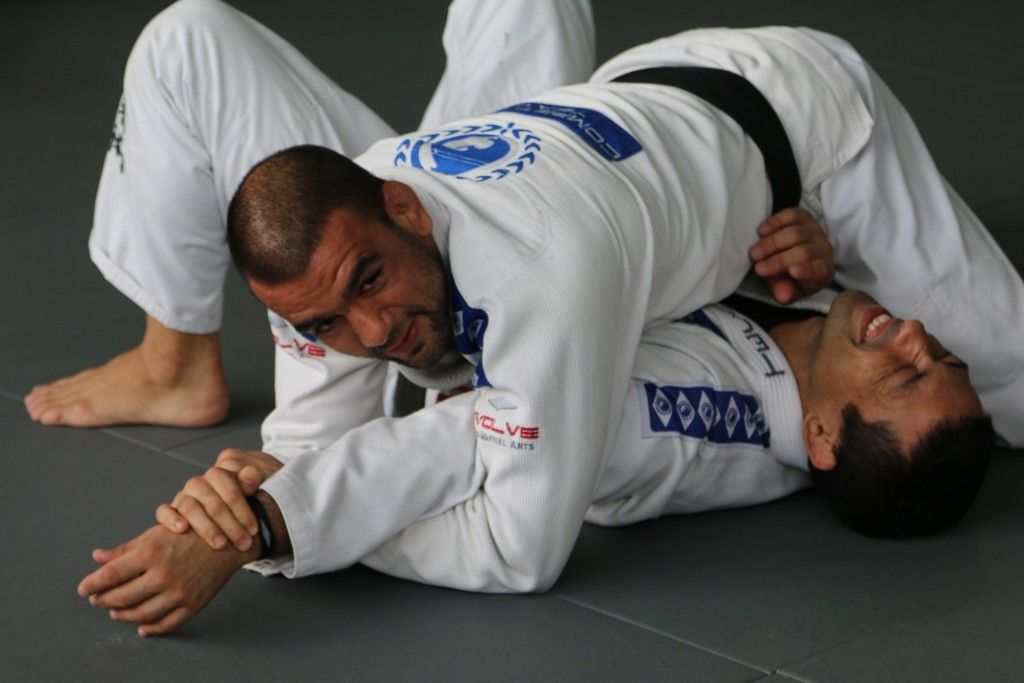Guest post by Evolve MMA, Asia’s premier championship brand for martial arts. It has the most number of World Champions on the planet. Named as the #1 ranked martial arts organization in Asia by CNN, Yahoo! Sports, FOX Sports, Evolve MMA is the best Singapore BJJ gym.
What sets BJJ apart from most martial arts is the live sparring that takes place during the last 15-20 minutes of every class. In fact, many BJJ students enjoy BJJ classes for this very reason. It is their chance to actually play the game of human chess. Finally, they get to test their mental and physical strength, as well as their technical knowledge.
In every BJJ class, there are two kinds of sparring:
- Specific sparring: You and your partner start from a certain position
- Free sparring: You and your partner start from any position
The type of sparring you’ll do is completely up to the discretion of your instructor, depending on what he wants to accomplish that day. Proper sparring is undoubtedly the quickest way to reveal your weaknesses in BJJ as well as the fastest way to level up.
For students who are interested in progressing in BJJ, you can check out our article on how to take your BJJ sparring to the next level. Today, Evolve Daily shares 5 Sparring Goals Every BJJ Student Must Commit To in order to get the most out of their sparring sessions:
1) Proper guard recovery
The guard is one of the most complex positions in BJJ. The open guard in particular encompasses many different guards as well as variations of those guards.
For many BJJ students, guard recovery is one of the most important aspects of their game that they need to work on. The better one’s guard recovery is, the easier it is for him or her to impose his or her game and dominate the match. Guard recovery can be particularly cumbersome during sparring because of the intensity of both students.
Tip: Before your next BJJ class, enlist a drilling partner and take turns working on your guard recovery.
2) Get and secure a particular submission
BJJ allows a smaller, weaker student to use leverage against a bigger and stronger opponent.
Every BJJ student knows the value of being able to successfully execute a submission. Getting a submission in sparring could get particularly challenging during sparring, especially since you and your partner are aiming for the same thing.
Choose a submission you’ve been working on in class or one of your favorites and find a way to eventually get it. Whether it’s through a sweep or getting a more dominant position, aim for that submission and do whatever you can to get it!
Tip: Remember to go back to your submission chains if your first submission doesn’t work. You should always have a back up plan!
3) Don’t use strength
As with every martial art, using strength during sparring is one of the biggest no-no’s. You’re not there to outpower or take out your aggression on your sparring partner. You’re there to learn and chances are, your training partner is there to learn too!
The more technique you use instead of strength, the better you become at BJJ. This is because your technique is good enough to outsmart your opponent and get him or her to the position you want. There’s no doubt that you will become completely in control of the entire match.
Tip: Resist the urge to use strength during your spars, no matter how tempting it gets. Remember, your goal is to get better at BJJ as a whole, not just to defeat an opponent or two.
4) Get as many points as you can
Just in case you forgot, here is the point system for BJJ:
Takedown (2 points)
Sweep (2 points)
Knee On The Belly (2 points)
Passing the guard (3 points)
Full mount (4 points)
Back control (4 points)
Near pass, serious submission attempt, etc. (advantage)
If you’re planning to compete in the future, being aware of how many points you’ve racked up in each spar really helps. Counting points also brings a whole new edge to your sparring sessions, forcing you to focus on maintaining positions (you have to maintain a certain position for a few seconds in order to score a point) and being more strategic instead of explosive.
Tip: Memorize the point system. This makes it easier for you to count points in your head, rather than rely on your coach or your instructor.
5) Fix a weakness
The armbar from the mount position is one of the many submissions you’ll learn in BJJ class.
One of the biggest barriers that stand in the way of any martial artist’s success is his or her ego. Listening to your ego prevents you from unleashing your potential and keeping you from improving.
In BJJ, the fastest way to improve is to work on your weaknesses through sparring. When you spar, you see all the holes in your game and your techniques. In BJJ, missing the simplest details could make a very big difference in how the sparring match ends. By allowing yourself to focus on your weaknesses and not let your ego take over, you’ll be surprised at how much better you’ll be on your next spar.
Tip: It doesn’t matter who wins or loses. Let yourself get tapped out, even if you know you could have overpowered your opponent in the end. What matters is that you’re trying to fix your technique in order to become a much better student in the end.
We’ve said it before; sparring makes you a better BJJ student, inside and out. It is a challenging experience that makes you fully understand the skills needed to excel in BJJ. As with all martial arts, we all need to improve ourselves continuously in order to overcome our fears and become more confident on and off the mats.
So tell us, which of these goals will you accomplish in your next training session?


















